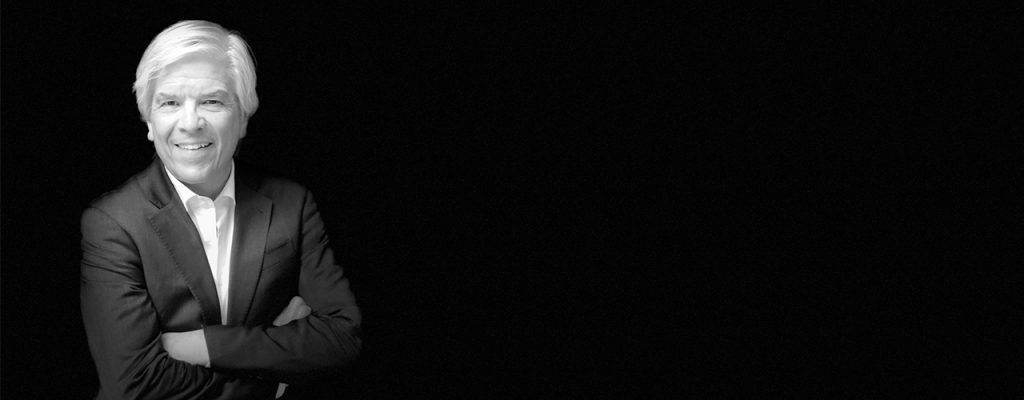By: Cynthia Macdonald
30 Oct, 2018

Romer explored his award-winning theories on endogenous growth with colleagues in CIFAR economics program
More than two decades ago, Paul Romer helped to found an economics program at CIFAR where he explored his ideas on the importance of technological change to economic growth. This year those ideas led to his sharing the Nobel Memorial Prize in Economic Sciences with Yale economist William Nordhaus.
The prize brings to 19 the number of Nobel Prize winners who are or have been affiliated with CIFAR.
In the early 1990s, Romer played a central part in founding CIFAR’s program in Economic Policy & Growth, which gave rise to today’s Institutions, Organizations & Growth program. He later went on to hold many senior positions in academia and business, most recently as Chief Economist of the World Bank, and Director of New York University’s Marron Institute of Urban Management.
In a seminal 1990 paper titled Endogenous Technological Change, Romer managed to solve a problem that had been vexing other economists. New ideas seemed to be driving progress – but why? By creating a model now known as endogenous growth theory, Romer offered a convincing scientific explanation.
Along with Nordhaus, whose focus is on climate policy, Romer has shown that new ideas are not just morally improving: they’re the very engine of a well-functioning economy. Ideas, as opposed to physical objects such as cars or food, are “non-rivalrous.” They can be shared, are limitless, and don’t expire. Best of all, they can be easily spread via modern technology.
Back in the early 1990s, Romer’s burgeoning talent for innovation naturally attracted the eye of CIFAR founder Fraser Mustard, who shared his delight in interdisciplinary work.
“Fraser was like a force of nature – he just made things happen by sheer energy and commitment,” Romer says. “The institute did, and still does, what I describe cities as doing. It creates connection points for people to come together.” Romer also credits CIFAR for its emphasis on solving real-world policy challenges. “It was a bold initiative, and it would have been worthy of praise even if it failed,” he says. “But it succeeded. That’s all the more reason we should celebrate what Fraser accomplished, and what the institute continues to accomplish.”
Fraser was like a force of nature – he just made things happen by sheer energy and commitment. The institute did, and still does, what I describe cities as doing. It creates connection points for people to come together.
Written at the dawn of the tech revolution, Romer’s ground-breaking paper now seems eerily prescient. “It’s not like I could predict the future,” he says. “Anybody who says they can do that is fooling themselves. But what I did do is look at history. I thought everybody was way too pessimistic about long-term trends. Within a few years, it turned out I was right.”
For a long time, pessimism and economics were natural bedfellows. The “dismal science” lived up to its nickname during the Great Depression. But as the century progressed and the population expanded, so too did economic growth. According to Romer, such growth was largely due to human innovation in the areas of transportation, agriculture, communication, healthcare, and many other fields.
It’s true that ideas aren’t always good, and can sometimes be destructive. For Romer, the antidote to bad ideas is ones that are better. As he said the day he won the Nobel: “what happens with technology is under our control.”
Not only a theorist, Romer practices what he preaches. Eighteen years ago he launched an educational software platform called Aplia, intended to complement classroom instruction. It’s a portal to which students have since submitted over a billion homework answers.
“We need to keep an open mind about where students learn best, which isn’t always in school,” Romer says, in a broader discussion of education. He adds that schools are important and should be subject to ongoing performance measurement. “Effective education can raise average incomes and reduce inequality,” he insists. “There’s a lot of room to do much better than we have been.”
Lately, Romer has concentrated his efforts on establishing new cities in the global south. Cities, after all, are the ultimate cradle for new ideas and partnerships; Romer thinks the worst urban problems (such as sprawl, gridlock, crime and homelessness) can be averted if workable ground rules are set ahead of time.
“The one thing that’s a huge problem is if you let urban development take place without a plan,” he says. To that end, he’s helping local administrators create charter communities in Colombia and Ethiopia, using a division of private and public space based on that of Nevada’s Burning Man festival.
“Burning Man has a plan that is very big, but very simple,” he says. “Big plans have to be simple. If cities just do that one thing, they’ll have a chance to establish all the connections that make urban life so valuable.”
Toward the end of the twentieth century, Paul Romer managed to quantify the power of human ingenuity on paper. But in the years since then, his unique career has served as a constant reminder of how well great ideas can work off the page, too.